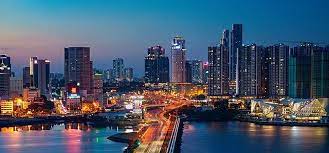The Birth of Disco: The Swinging 60s
The 1960s marked a period of significant social change, and disco emerged as a musical response to these shifts. Drawing inspiration from various genres such as soul, funk, and rhythm and blues, disco music incorporated elements of dance and showcased a fusion of different musical styles. Artists like James Brown, Diana Ross, and The Supremes paved the way for disco’s rise to prominence, infusing their music with infectious rhythms and catchy melodies.
As the decade progressed, disco began to establish its own unique identity. The Motown sound, characterized by its smooth vocals and orchestral arrangements, played a crucial role in shaping the early disco sound. Songs like “Dancing in the Street” by Martha and the Vandellas and “You Can’t Hurry Love” by The Supremes exemplified the infectious grooves that would become synonymous with disco.
The Golden Age: Disco Dominates the 70s
The 1970s witnessed disco’s meteoric rise to fame, as it became the soundtrack of a generation. The release of films like “Saturday Night Fever” propelled disco into the mainstream, with John Travolta’s iconic dance moves and the Bee Gees’ chart-topping soundtrack capturing the essence of the era. Disco clubs became hotspots for socializing and dancing, with Studio 54 in New York City emerging as the epitome of disco culture.
During this golden age, disco music evolved to incorporate more electronic elements, with the introduction of synthesizers and drum machines. Artists such as Donna Summer, Gloria Gaynor, and Chic dominated the charts, delivering timeless hits like “I Will Survive,” “Le Freak,” and “Stayin’ Alive.” These songs showcased disco’s infectious rhythms, soaring vocals, and pulsating basslines that compelled people to hit the dance floor.
The Backlash and Decline: Disco in the 80s
As the 1980s dawned, a backlash against disco began to take shape. Critics argued that disco had become too commercialized and formulaic, leading to a decline in its popularity. The infamous “Disco Demolition Night” at Chicago’s Comiskey Park in 1979 symbolized the growing animosity towards the genre.
However, disco’s influence persisted, albeit in a more subdued manner. Artists like Michael Jackson and Madonna incorporated disco elements into their music, infusing it with a fresh sound that appealed to a broader audience. Songs like Jackson’s “Don’t Stop ‘Til You Get Enough” and Madonna’s “Into the Groove” paid homage to disco’s infectious energy while incorporating new wave and pop sensibilities.
The Resurgence and Legacy: Disco Today
In recent years, disco has experienced a resurgence, with artists and producers revisiting its iconic sound. This revival can be attributed to a desire for nostalgia and a renewed appreciation for disco’s infectious grooves. Artists like Daft Punk, Bruno Mars, and Dua Lipa have released songs that pay homage to disco’s heyday while infusing it with a modern twist.
Furthermore, disco’s influence can be heard in various genres today. Electronic dance music (EDM) owes much of its foundation to disco, with DJs and producers incorporating disco samples and elements into their tracks. The disco-infused house music of the 90s and early 2000s also played a significant role in keeping the genre alive.
Conclusion:
Disco music has left an indelible mark on the music industry, captivating audiences with its infectious beats and vibrant energy. From its humble beginnings in the 1960s to its golden age in the 70s and subsequent decline in the 80s, disco’s legacy continues to resonate today. Its influence can be heard in various genres, and its timeless hits continue to fill dance floors around the world. As we look back on the evolution of disco, it is evident that its impact on popular music is both profound and enduring.

